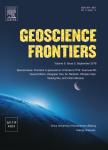Empirical assessment of the role of the Sun in climate change using balanced multi-proxy solar records
作者机构:Department of Earth SciencesEnvironment and GeoresourcesUniversity of Naples Federico IIComplesso Universitario di Monte S.Angelovia Cinthia21Naples 80126Italy
出 版 物:《Geoscience Frontiers》 (地学前缘(英文版))
年 卷 期:2023年第14卷第6期
页 面:191-209页
核心收录:
学科分类:070903[理学-古生物学与地层学(含:古人类学)] 0709[理学-地质学] 07[理学] 0713[理学-生态学]
主 题:Solar activity changes Solar variability climatic impact Global climate change and modeling Equilibrium climate sensitivity
摘 要:The role of the Sun in climate change is hotly *** studies suggest its impact is significant,while others suggest it is *** Intergovernmental Panel on Climate Change(IPCC)supports the latter view and suggests that nearly 100%of the observed surface warming from 1850–1900 to 2020 is due to anthropogenic ***,the IPCC’s conclusions are based solely on computer simulations made with global climate models(GCMs)forced with a total solar irradiance(TSI)record showing a low multi-decadal and secular *** same models also assume that the Sun affects the climate system only through radiative forcing–such as TSI–even though the climate could also be affected by other solar *** this paper I propose three“balancedmulti-proxy models of total solar activity(TSA)that consider all main solar proxies proposed in scientific *** optimal signature on global and sea surface temperature records is assessed together with those produced by the anthropogenic and volcanic radiative forcing functions adopted by the CMIP6 *** is done by using a basic energy balance model calibrated with a differential multi-linear regression methodology,which allows the climate system to respond to the solar input differently than to radiative forcings alone,and to evaluate the climate’s characteristic time-response as *** proposed methodology reproduces the results of the CMIP6 GCMs when their original forcing functions are applied under similar physical conditions,indicating that,in such a scenario,the likely range of the equilibrium climate sensitivity(ECS)could be 1.4℃to 2.8℃,with a mean of 2.1℃(using the HadCRUT5 temperature record),which is compatible with the low-ECS CMIP6 GCM ***,if the proposed solar records are used as TSA proxies and the climatic sensitivity to them is allowed to differ from the climatic sensitivity to radiative forcings,a much greater solar impact on climate change is found,along with a significant



